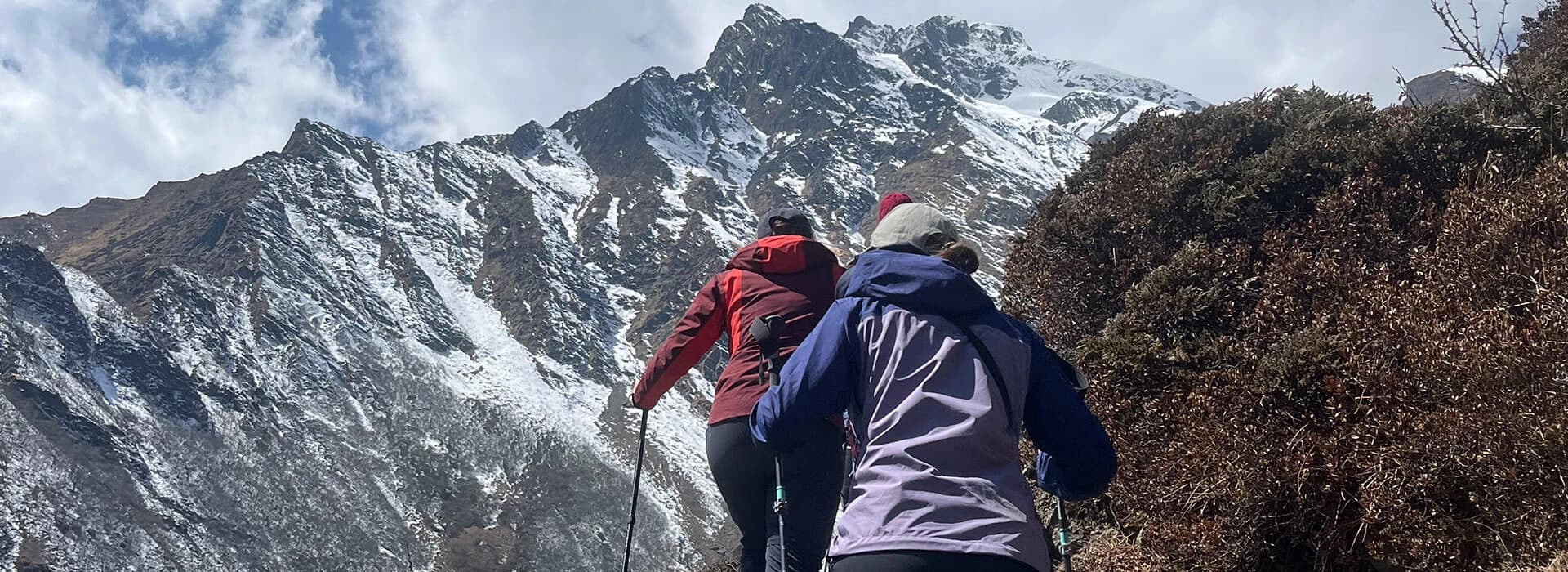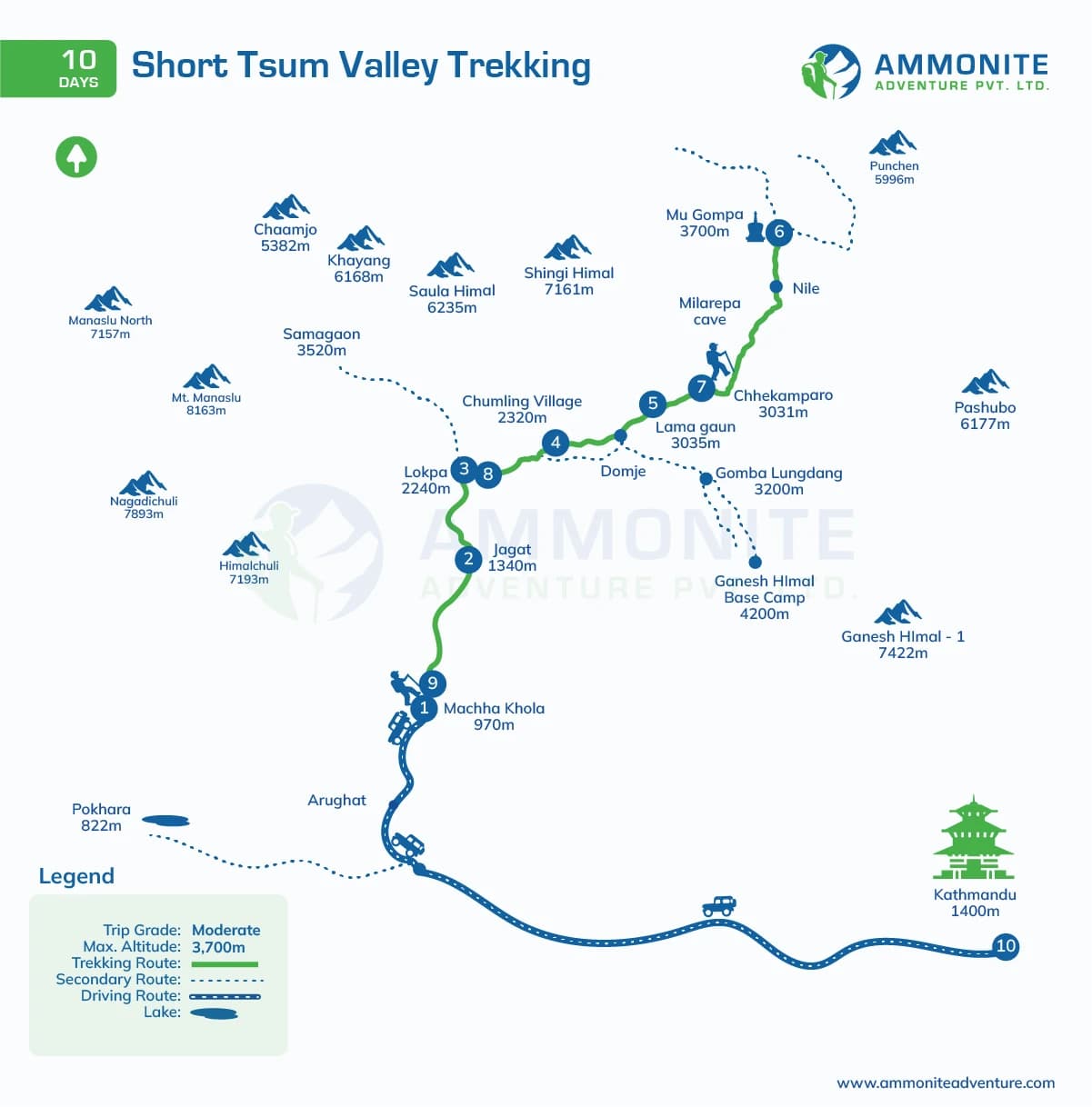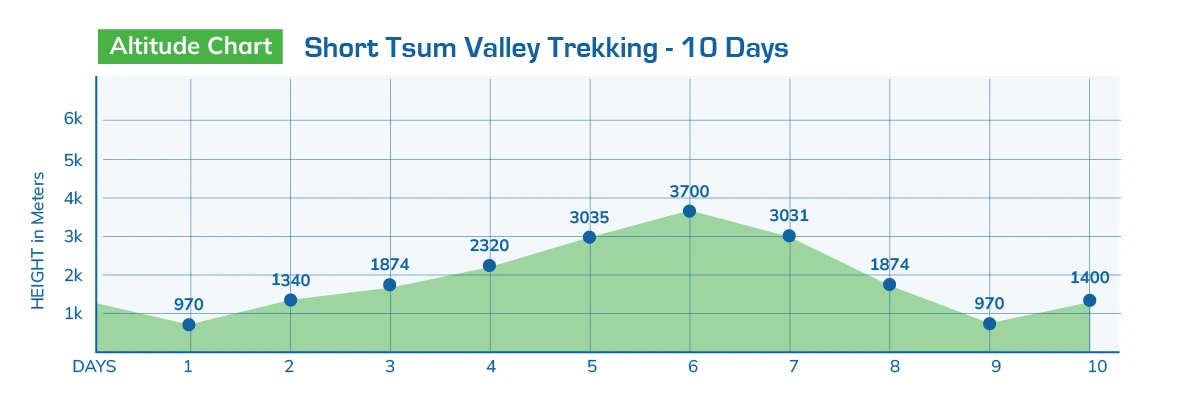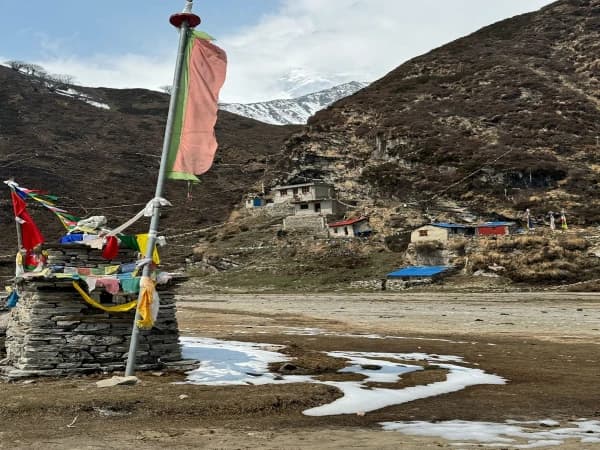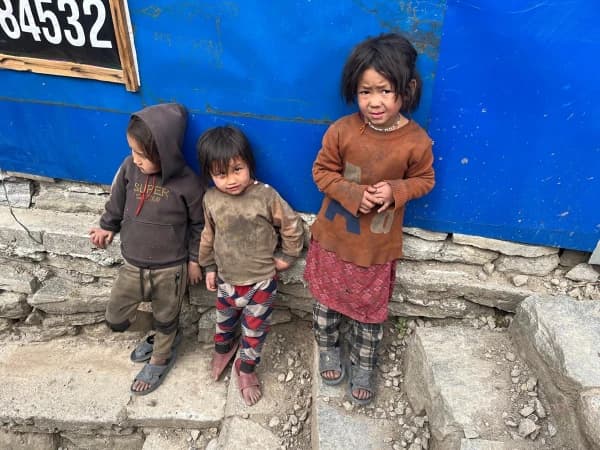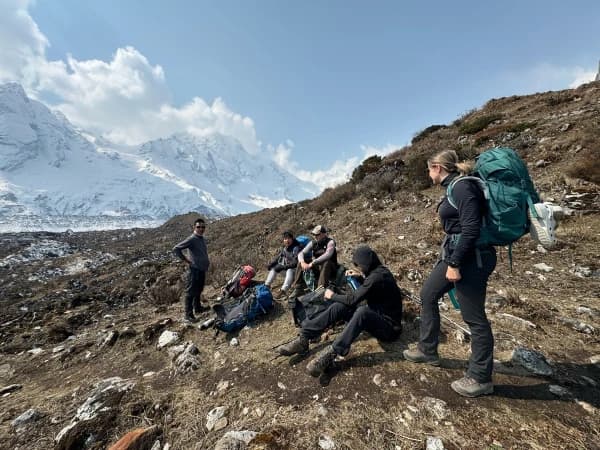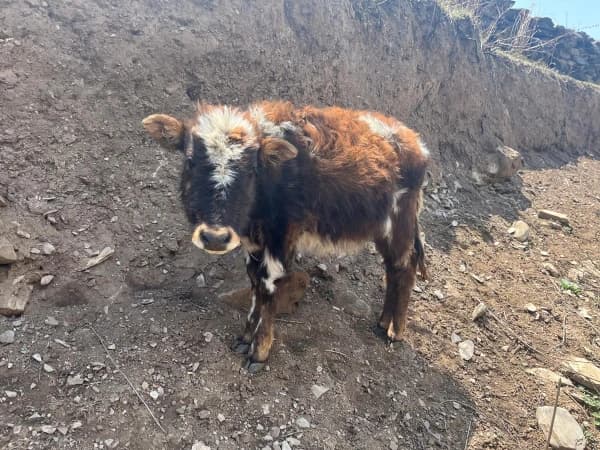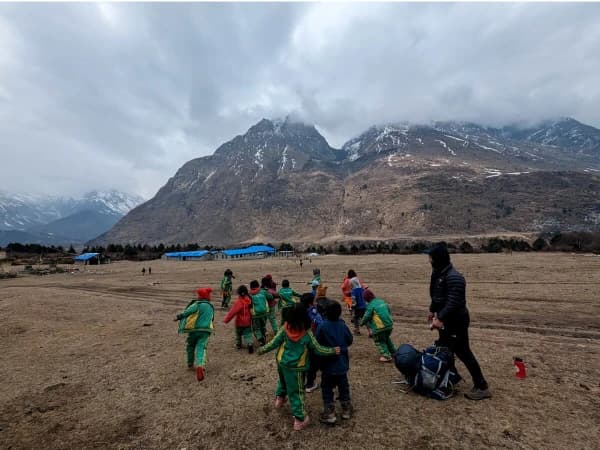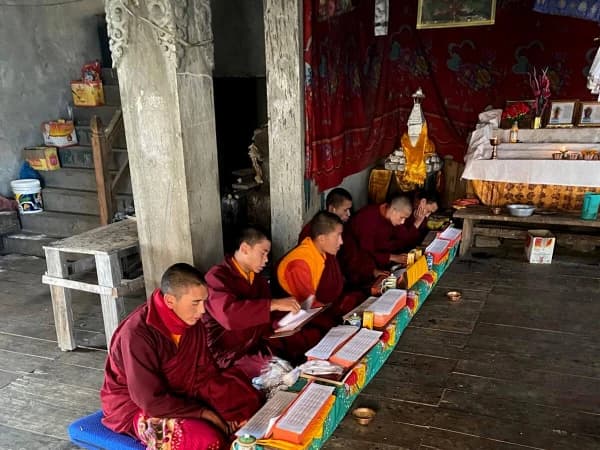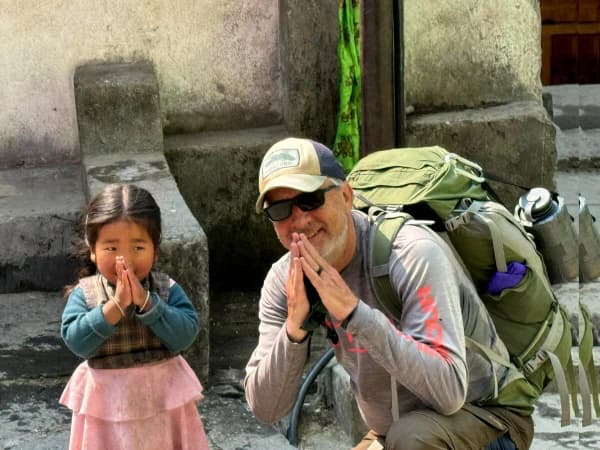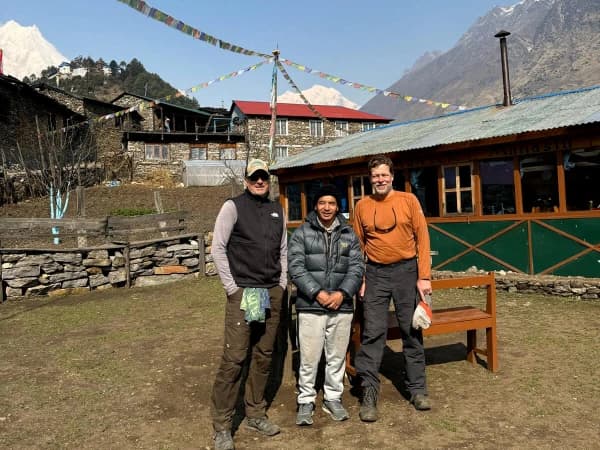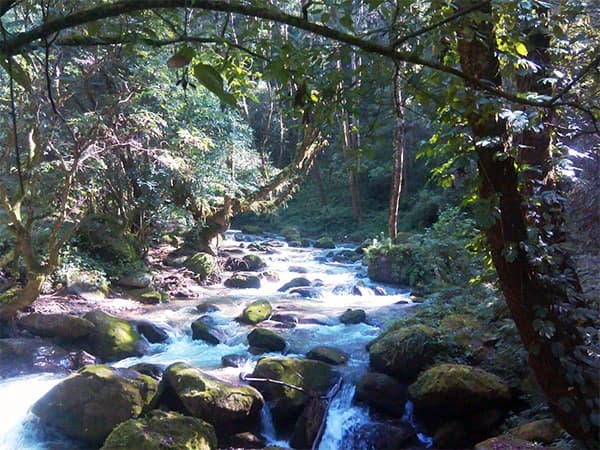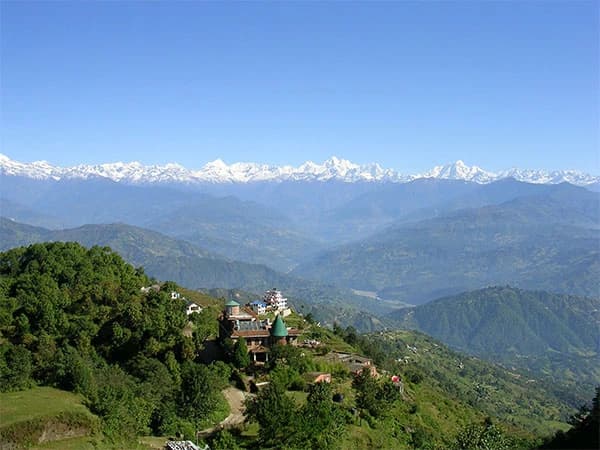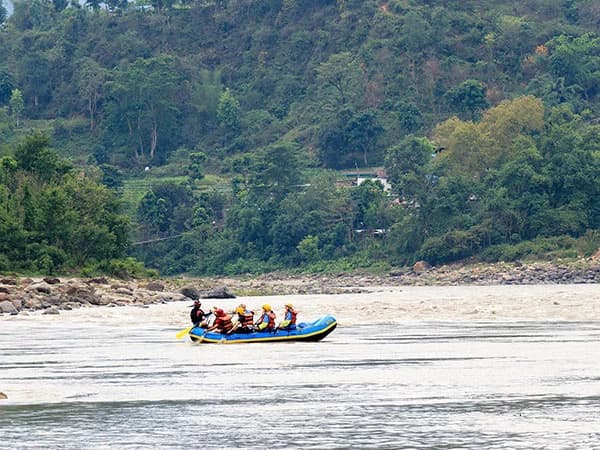An incredible 18 days itinerary, with an insight in life in the villages on the trail. The views on the
Short Tsum Valley Trekking - 10 Days Trip Overview
The Tsum Valley Short Trekking-10 Days offers an immersive journey into one of Nepal's most secluded Himalayan valleys. This restricted area trek in Nepal is famous for rich ancient art, culture, and religion, making the area one of the few trekking routes for trekkers who seek a path that is still off the beaten track.
Tsum Valley is also considered the "Beyul Kyimolung," the valley of happiness, which Guru Rimpoche had described in detail in the 18th century. This really far-flung and inaccessible region is proud of its artistic monasteries, Mani walls, stupas, and prayer flags that speak volumes about the intrinsic Buddhist tradition of the people. It is surrounded in all four directions by the grandeur of the Ganesh Himal, Sringi Himal, and Boudha Himal mountain ranges.
The basic itinerary for Tsum Valley Short Trekking commonly includes the drive from Kathmandu to Machha Khola and then treks via different villages such as Jagat, Lokpa, Chumling, Chhekamparo, and ultimately reaches Mu Gompa Monastery. The route for this short walking holiday in Tsum Valley enables one to trek the unfrequented trails of this valley sheltering a very pure form of the traditional Tibetan culture and lifestyle. It also boasts of an equally impressive biodiversity, with sightings of the Himalayan Tahr and Blue Sheep quite common on this route of trekking.
Travel planners such as Ammonite Adventure have well-organized teams for discovering this area with relevant itineraries. Their expertise will make sure that trekkers get to plunge into all the cultural and natural beauties of the valley. Manaslu Tsum Valley Short Trek 10 Days will be best for those who want to go on a short yet comprehensive trek in the mentioned region. Indeed, every trekker who has ever been on a Tsum Valley Trek in just 10 days in one single trip always favors this short trekking itinerary. It’s a culturally and naturally rich hiking experience along a less crowded route that rewards those seeking an authentic Himalayan experience.
Highlights Of Tsum Valley Short Trail Adventure
- Trek the restricted area trek in Nepal with rich Tibetan culture and Buddhist heritage.
- Hike through the less crowded trail and untraveled Manaslu region.
- Spectacular views of Ganesh Himal, Shringi Himal and Boudha Himal ranges. Visit ancient monasteries, Mani walls, stupas and prayer flags, which present maintaining centuries-old traditions.
- Experience the remote and barren beauty of this less traveled route, which is far from the crowded trekking trails. See some of the unique Himalayan wildlife like the Himalayan Thar and Blue sheep.
- Immerse in the serene beauty of the valley, also called “Beyul Kyimolung,” the valley of happiness.
- Enjoy a well-planned itinerary by expert travel planners like Ammonite Adventure.
- A perfect combination of cultural exploration and natural splendor in just 10 days. Ideal if you are trekkers searching for adventurous short trekking in Nepal.
Short Hiking Tour Through Tsum Valley: Nepal’s Untouched Off-Beaten Trails
A short hiking tour in the Tsum Valley of Nepal uncovers a hidden valley steeped in history and culture. The valley is located in the northern part of the Gorkha district, which was opened to visitors in 2008 and thus was able to retain its unique culture.
The valley is populated by the aboriginal Tsumba people of Tibetan origin, having their dialect and accent heavily tinged with Tibetan. The life of the people has deep roots in Buddhist traditions, as depicted by the abundance of ancient monasteries, chortens, and Mani walls found throughout the area. Most especially, in 1920, the valley was demarcated as a zone of non-violence or "Shyagya," reflecting a commitment to peace and prohibition of animal slaughter.
The isolation of the valley has conserved its virgin environment and its culture; entry herein requires special permits not to break its sanctity. Trekking herein is essentially a journey into an area that the hands of modern civilization have hardly touched upon on off-beat tracks. It is an important destination boasting breathtaking Himalayan views with an ambiance of spirituality-which happens to be a must for one seeking a genuine quiet trekking experience.
Where Does 10 Days Manaslu Tsum Valley Itinerary Start and End?
The 10 Days Manaslu Tsum Valley Itinerary begins with an overland drive, heading towards the Gorkha district of Machha Khola. The trail leads by the side of Budhi Gandaki River, walking past terraced fields and typical rural farm villages. Gradually, the path leads into forested areas of blooming rhododendrons and pines blessed with the natural beauty of Nepal.
The trail leaves the main Manaslu trail and heads up into the Tsum Valley, a culturally rich and restricted area trek in Nepal. The buildings, prayer flags, Mani walls and Buddhist chortens are all testimonies to the cultural riches of this mystical valley. Along the way, we may see some fauna, such as blue sheep or Himalayan Thar, and catch superb views of Ganesh Himal. The end point is Mu Gompa, a serene enshrined in mountains. We then return down the valley and finish back in Kathmandu with once in a lifetime experience.
Benefits of Tsum Valley Trekking and Hiking with Ammonite Adventure.
- Free airport pick up and drop off.
- Expert trekking guides from the Tsum Valley region.
- Pre-trip online briefing with Krishna B. Pariyar of Ammonite Adventure.
- Guaranteed departure for confirmed booking as per your travel date.
- 24/7 communication support through WhatsApp, Viber and other mediums.
- Effortless and secure payment methods to make the booking smooth.
- Trekking Gear like the Sleeping Bag, Down Jacket and Walking Pole (Trekking Pole) are provided to be returned after your trek. Storeroom facility for excess luggage while on your trek.
- Free trekking map of the Tsum Valley, a branded T-shirt and a duffle bag of the company.
- Medical kits to deal with minor injuries and ailments on the journey.
Short Tsum Valley Trekking - 10 Days Cost and Budget (Small Group Size Upto 8)
The cost for the trek is available as per your group size and service requirements. The price starts from US$ 799 per person on a twin-sharing basis on a group of (2-3) persons, and it decreases to US$ 699 per person on a twin-sharing basis if the group size is upto 8 or above persons. We organize small guided group trekking and tours in Nepal for families, friends, teenagers, and students. From tailored trekking experiences to adventures off the beaten track, we can offer a tailored itinerary including expert guides on all journeys. Our Small Group Trekking Cost are as follows:
- 2 people: 1099 $ per person
- 4 people: 955 $ per person
- 8 people: 875 $ per person
It usually includes a local trekking guide, meals during the trek, transfers to Kathmandu / Machha Khola / Kathmandu, accommodation in Teahouses, trekking permits and insurance for the staff.
Restricted Area Trekking Permits Cost
To trek in the Tsum Valley, you’ll require a Restricted Area Permit (RAP). The cost of RAP varies according to the month of trekking. In the high season (September to November), it is USD 40 per person per week, and in the low season (December to August), it will be USD 30 per person per week. Manaslu Conservation Area Permit (MCAP) and Annapurna Conservation Area Permit (ACAP) must also be obtained which costs around $30 each.
Guide and Porter Fee
You are required to take a guide for this trek. It’s always good to have one even if you are familiar with the route as they can add great cultural insight plus help out with navigation incase if we missed markers or went on the wrong route, etc. A guide will cost about $25-30 per day. Porters can be hired at around $20-25 per day.
Tsum Valley Short Trek Itinerary - 10 Days with Trek Distance
|
Day |
Itinerary |
Elevation (m) |
Distance (km / miles) |
|
1 |
Kathmandu to Machha Khola |
970 |
Driving: 160 km / 99 mi |
|
2 |
Trek to Jagat |
1,340 |
15 km / 9.3 mi |
|
3 |
Trek to Lokpa Village |
1,874 |
10 km / 6.2 mi |
|
4 |
Trek to Chumling Village |
2,320 |
11 km / 6.8 mi |
|
5 |
Trek to Lar or Lama Gaun |
3,035 |
15 km / 9.3 mi |
|
6 |
Hike to Monastery of Mu Gompa |
3,700 |
10 km / 6.2 mi |
|
7 |
Hike back to Chhekamparo |
3,031 |
10 km / 6.2 mi |
|
8 |
Trek down to Lokpa Village |
1,874 |
12 km / 7.5 mi |
|
9 |
Trek down to Machha Khola |
970 |
15 km / 9.3 mi |
|
10 |
Drive back to Kathmandu |
- |
Driving: 160 km / 99 mi |
Total Trekking and Driving Distance
- Total trekking distance: 98 km / 61 miles
- Kathmandu to Machha Khola and back: 320 km / 198 miles
- If starting or ending in Pokhara: 400 km / 248 miles (including the return journey).
- Kathmandu to Pokhara, changing destination: 382 km / 237 miles

